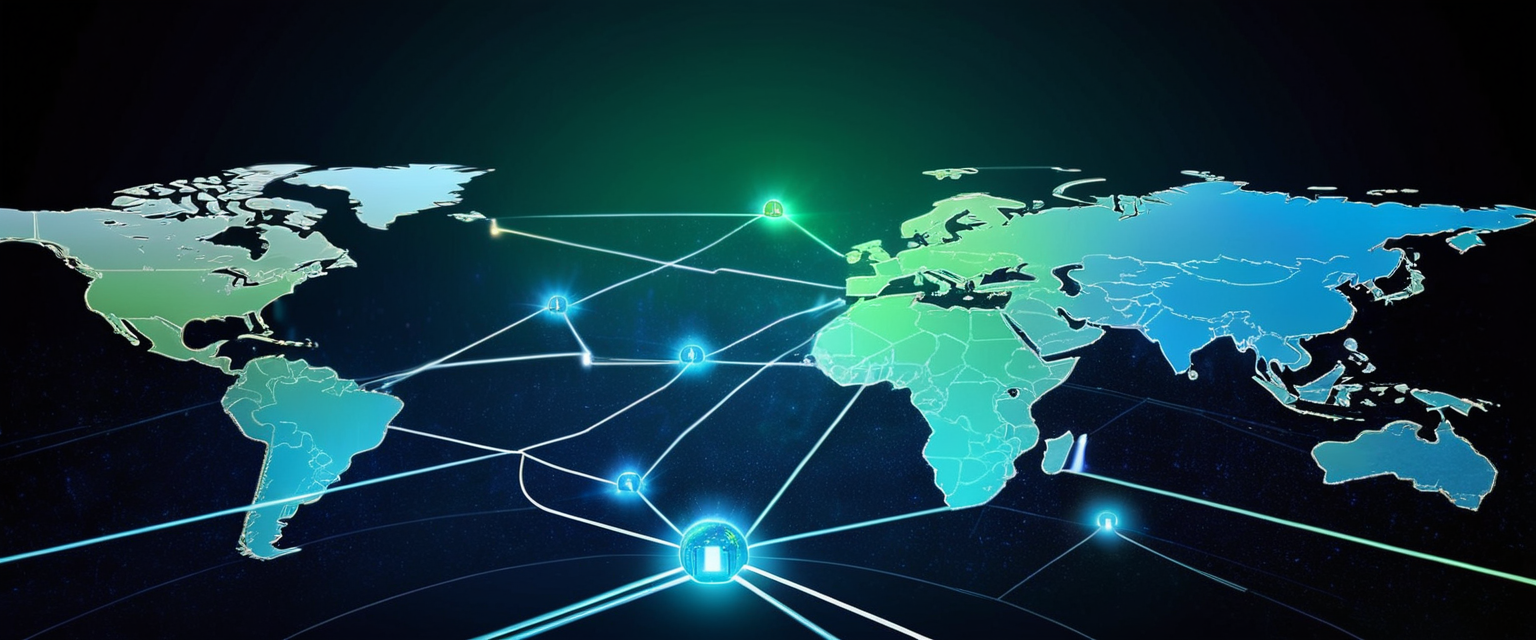
A Virtual Private Network, commonly abbreviated as VPN, represents a fundamental technology in modern internet security and privacy infrastructure that creates encrypted, secure connections over public networks by routing user traffic through remote servers and masking IP addresses. VPNs function as intermediaries between user devices and the internet, establishing private tunnels through which all data transmission becomes encrypted and protected from unauthorized access, interception, or surveillance by third parties including internet service providers, hackers, and potentially malicious actors on public Wi-Fi networks. This comprehensive analysis explores the multifaceted meaning of VPN technology, examining its definitional aspects, technical architecture, historical development, practical applications, and evolving role in an increasingly connected and security-conscious digital landscape where data privacy has become paramount for both individual users and enterprise organizations worldwide.
Foundational Definition and Core Concept of Virtual Private Networks
The term “Virtual Private Network” encompasses three distinct but interconnected concepts that together define the technology’s fundamental purpose and function. The word “virtual” indicates that no physical cables or dedicated hardware infrastructure physically connects the user’s device to the remote network; instead, the connection exists as a logical pathway through the public internet infrastructure. The designation “private” reflects the primary function of a VPN, which ensures that communications transmitted through the network remain confidential, hidden from observation by unauthorized parties, and protected through encryption mechanisms that render data unreadable without proper decryption keys. The term “network” denotes that multiple devices can connect through the VPN system to access shared resources, communicate securely with each other, or connect to a centralized network, effectively creating an extension of a private network across public internet connections.
At its most fundamental level, a VPN establishes a secure encrypted connection between a user’s device and another network located remotely, potentially thousands of miles away. When a user activates a VPN connection, the VPN client software installed on their device communicates with a VPN server, establishing an encrypted tunnel through which all internet traffic passes before reaching its intended destination. This encrypted tunnel serves as a protective barrier, obscuring the user’s actual IP address, geographic location, and the specific websites or services they access from anyone attempting to monitor their online activity. The VPN server essentially becomes an intermediary between the user and the broader internet, presenting itself as the source of all data transmissions, which means that websites visited, online services accessed, and external observers all perceive the user’s location and identity as emanating from the VPN server rather than from their actual device.
The meaning of VPN extends beyond mere technical definition to encompass its practical purpose in the digital age. VPNs represent a response to fundamental threats inherent in internet communication, including the vulnerability of unencrypted data transmission on public networks, the ability of internet service providers to monitor and potentially sell user browsing data, the risks of identity theft and credential interception on unsecured networks, and the surveillance capabilities that governments or malicious actors can deploy against unprotected internet users. By creating an encrypted tunnel and masking identity, VPNs provide users with three critical protections: enhanced privacy through encryption that prevents third-party observation of internet activity, anonymity through IP address masking that obscures the user’s true location and identity, and security through protection against common attack vectors such as man-in-the-middle attacks on public Wi-Fi networks.
Historical Development and Evolution of VPN Technology
Understanding what VPN means requires examining how this technology developed and evolved from its origins as a corporate security tool to its contemporary role as both an enterprise security solution and a personal privacy protection mechanism. The history of VPN technology dates back to 1996 when Microsoft employee Gurdeep Singh-Pall developed the first VPN technology through the Peer-to-Peer Tunneling Protocol, commonly abbreviated as PPTP. This pioneering work emerged from a fundamental business need in the mid-1990s when organizations began requiring methods to securely connect remote employees to corporate networks over the public internet infrastructure, replacing expensive and inflexible dedicated wide-area network connections with more economical and flexible solutions. The original PPTP implementation established the basic three-step framework that remains central to VPN operations today: authentication to verify user identity, tunneling to create a secure pathway for data transmission, and encryption to protect information passing through that pathway.
As internet usage exploded in the late 1990s and early 2000s, the meaning and significance of VPN technology transformed dramatically. Researchers including Wei Xu conducted work in 1994 focused on IP security and enhanced IP protocols, eventually leading to the development of IPsec, an internet security protocol suite that authenticates and encrypts each packet of information shared across the internet. Simultaneously, work at the Naval Research Library under a DARPA grant created the Encapsulating Security Protocol, which provides authenticity, integrity, and confidentiality protection for data packets, establishing another major breakthrough for internet security. The formation of the IPsec working group within the Internet Engineering Task Force in 1995 represented a critical milestone, establishing standardized, freely available, and thoroughly vetted protocols addressing VPN components, extensions, and implementation methodologies. By 1999, the first-ever VPN specification became publicly available, marking the transition of VPN from proprietary Microsoft technology to a standardized protocol suite that could be implemented across different platforms and by various vendors.
The early 2000s witnessed a pivotal transformation in VPN adoption and perception, driven largely by high-profile security breaches that exposed the vulnerabilities inherent in unprotected internet communication. As cybercriminals began systematically targeting unencrypted online communications, everyday internet users became acutely aware of privacy and security risks that had previously seemed abstract or distant. This awareness catalyzed the transition of VPN from an exclusively corporate security tool to technology increasingly adopted by individual users seeking personal privacy protection. Over the subsequent two decades, VPN technology evolved continuously, with improvements in encryption strength, protocol efficiency, user interface simplicity, and server infrastructure scalability. Modern VPNs now incorporate advanced encryption algorithms such as AES-256, sophisticated tunneling protocols like WireGuard that balance security with performance, and user-friendly applications that require minimal technical knowledge to operate.
How Virtual Private Networks Function: Technical Architecture and Operational Mechanisms
The technical meaning of VPN becomes apparent only through understanding the sophisticated mechanisms by which these systems achieve their security and privacy objectives. When a user connects to a VPN, their device initiates a connection to a VPN server through a process that involves several critical stages of setup, authentication, and tunnel establishment. The pre-connection setup phase involves infrastructure configuration where the VPN gateway sits at the network’s edge, functioning as a bridge between the internal corporate network and external devices, while client software installed on employee devices initiates the VPN connection and handles ongoing communication. Administrators must define security policies and access rules to govern traffic flow and dictate user permissions, establish secure communication protocols, select strong encryption standards, and configure network routes that the encrypted VPN traffic will follow.
The initiation phase of a VPN connection begins with user authentication, a critical security function that verifies the identity of the user attempting to access the network. This authentication process protects against unauthorized access from both the local network and the wider internet, employing various methods ranging from simple username and password combinations to sophisticated multifactor authentication schemes requiring users to provide two or more verification factors such as passwords, physical tokens, or biometric verification. Following successful authentication, the client and server engage in a handshake protocol involving version negotiation where both parties agree on the VPN security protocol version to be used. This handshake also involves selecting a cipher suite, which dictates the encryption algorithm and key exchange method, ensuring both the client and server possess the necessary credentials and cryptographic capabilities to establish a secure communication channel.
Once the handshake completes successfully, the process moves to the tunnel establishment phase where the core security mechanisms activate. Both the client and server agree on a tunneling protocol such as IPsec or L2TP that suits their security requirements and network capabilities. The tunnel protocol selection determines the level of security achieved, compatibility with existing infrastructure, and ability to traverse firewalls and network address translators. Following protocol selection, the secure channel creation begins with a key exchange, often employing the Diffie-Hellman algorithm, which provides a method to securely generate and share a key between parties without transmitting the key itself over the internet. Both client and server generate temporary key pairs consisting of private and public components, then exchange the public keys between them. Each side combines the received public key with its own private key to generate a shared secret known only to both parties. Advanced implementations employ Diffie-Hellman groups with larger key sizes and use cryptographic algorithms such as AES to encrypt the shared secret, providing additional security layers.
The data transfer phase represents where the actual protected communication occurs. Once the VPN tunnel is established, each VPN client receives an IP address from a designated pool, enabling the client device to effectively join the corporate network and access resources in accordance with established permissions and policies. The VPN client then routes all internet traffic through the encrypted tunnel to the VPN server. Data packets generated by the user’s applications are intercepted by the VPN client software, which encrypts the data payload using the negotiated encryption algorithm, encapsulates the encrypted data within new packet headers, and transmits the resulting packet through the tunnel to the VPN server. At the VPN server end, the incoming encrypted packets undergo decryption, the encapsulation layer is stripped away to recover the original data packets, and these original packets are forwarded to their intended destinations as if they originated from the VPN server itself. This process ensures that the user’s true IP address, geographic location, and identity remain hidden from the websites, services, and external observers who see only the VPN server’s details.
Protect Your Digital Life with Activate Security
Get 14 powerful security tools in one comprehensive suite. VPN, antivirus, password manager, dark web monitoring, and more.
Get Protected NowKey Components Comprising VPN Architecture
Understanding what VPN means requires familiarity with the essential components that together comprise a functional VPN system. The VPN client represents the software application installed on a user’s device such as a laptop, phone, or tablet, initiating secure connections to VPN servers while encrypting user internet traffic and handling the authentication process. The client ensures data privacy by routing traffic through a secure tunnel, preventing unauthorized access and eavesdropping, while also selecting which VPN protocol to use based on compatibility and security requirements. The VPN server functions as the destination endpoint receiving client encrypted traffic, decrypting the data, enforcing access control policies, and routing traffic to appropriate internal resources or internet destinations. The server works in tandem with the client using VPN protocols to establish and maintain secure communications, and once the user goes online, this VPN server becomes the source of all the user’s data, meaning the internet service provider and other third parties can no longer see the contents of internet traffic.
VPN protocols define how data is securely transmitted between client and server, with common protocols including OpenVPN, IPsec, L2TP, WireGuard, and IKEv2. These protocols determine the level of encryption, connection speed, and reliability, with the choice of protocol impacting security posture and user experience. OpenVPN represents a robust, secure protocol favored in enterprise environments for its strong encryption and configurability, operating by creating secure point-to-point or site-to-site connections in routed or bridged configurations through custom security protocols utilizing SSL/TLS for key exchange. IPsec functions by encrypting and authenticating all IP packet transfers through transport and tunnel modes, where transport mode encrypts only the message within data packets while tunnel mode encrypts entire data packets. WireGuard represents a cutting-edge protocol known for simplicity and high-speed performance, using state-of-the-art cryptographic techniques as an open-source project with streamlined approach resulting in better efficiency and ease of use. IKEv2, part of the IPsec protocol suite, implements large numbers of cryptographic algorithms including AES with 256-bit keys, offering excellent speed, security, and reliability with native support in most modern operating systems.

Classification and Types of Virtual Private Networks
VPNs manifest in different configurations serving distinct organizational and individual purposes, each representing different interpretations of what VPN means in specific contexts. Site-to-site VPNs establish links between two or more distinct networks, such as a company’s main network and satellite office networks, enabling organizations with multiple branches spread across diverse regions to safely integrate their central network with distant offices, facilitating seamless communication and resource sharing as though they operated as one unified network. Remote access VPNs allow off-site users to securely connect to and utilize applications and information in a company’s main data center, encrypting all user data transmitted and received while ensuring security regardless of the user’s public location by forming virtually private connections using tunnels between the enterprise network and distant users. Cloud VPNs, sometimes referred to as hosted VPNs or VPN as a service, represent VPN approaches tailored for cloud environments, allowing users to securely access business resources, data, and applications in the cloud through web interfaces or dedicated apps on desktop or mobile devices.
SSL VPNs employ the SSL security protocol or its successor, the Transport Layer Security protocol, to ensure encrypted data transmission between user devices and VPN gateways, safeguarding integrity and confidentiality while not requiring specialized VPN client software since they use standard web browsers instead. This category includes SSL Portal VPNs where users access single webpages providing links to other private network resources through designated websites and entering credentials to initiate secure SSL connections, and SSL Tunnel VPNs enabling more comprehensive access to multiple network services beyond just web-based resources. Double VPNs represent an advanced configuration where data passes through multiple VPN servers, receiving multiple layers of encryption for enhanced security but typically with reduced speeds. Personal VPNs designed for individual use rather than business purposes enable consumers to protect their privacy, secure their data on public Wi-Fi networks, and access geographically restricted content from anywhere.
Encryption Standards and Cryptographic Mechanisms
The meaning of VPN security fundamentally rests on sophisticated encryption mechanisms that render data unreadable to anyone lacking proper decryption keys. VPNs employ several different types of encryption to protect user data, with differences mainly based on encryption keys used. AES encryption represents one of the strongest protocols available, with three different lengths of encryption keys—AES-128, AES-192, and AES-256—providing increased security levels. Even with the most robust encryption key, AES uses less memory than other encryption methods and is easier to implement. The highest level of encryption used by better VPNs is 256-bit AES, which provides military-grade protection for sensitive data. Public-key encryption uses a combination of two keys—a public key and a private key—where both must be present to decrypt data, and this type of encryption is often used especially for secure sockets layer security that encrypts website data. Symmetric encryption uses the same key to encrypt and decrypt information, with information encrypted by scrambling data then unscrambled and decrypted once the recipient inputs the password or key. Transport Layer Security represents an encryption protocol protecting data on the internet, used primarily to protect communication between websites and servers but also protecting other communication such as email and messaging.
VPNs implement multiple encryption layers to provide comprehensive protection, with some VPN connections using SSL/TLS connections meaning data gets encrypted and then encrypted again using the VPN service itself, adding double encryption to communications and improving security. This layered approach means that even if someone attempts to intercept data on public Wi-Fi before it gets to the VPN server, they will only see scrambled, unreadable information. The encryption process takes time, and depending on the type of encryption used, this introduces latency to internet communications, creating a tradeoff between VPN encryption strength and latency where typically the most secure encryption protocols are more time-consuming and create greater amounts of latency. However, newer encryption protocols such as TLS 1.3 aim to correct this by speeding up the encryption process.
Benefits and Primary Functions of Virtual Private Networks
VPNs serve multiple critical functions that together define their meaning and importance in modern digital infrastructure. The privacy function prevents users’ personal data including passwords, credit card information, and browsing history from being recorded and sold by third parties, instead using encryption to keep confidential information private especially when connecting over public wi-fi networks. The anonymity function conceals users’ IP addresses, which normally contain information about users’ locations and browsing activity, enabling users to remain anonymous online and preventing identification when visiting websites. The security function uses cryptography to protect internet connections from unauthorized access while also functioning as shutdown mechanisms that terminate pre-selected programs in case of suspicious internet activity, decreasing the likelihood of data being compromised. The cost-efficiency function provides cost-effective, high-speed, and secure ways to connect remote users to office networks, leveraging public internet connections rather than expensive dedicated wide-area network links or long-distance remote-dial links.
Contemporary VPN usage reflects these multiple benefits, with recent data showing that enhanced privacy is cited by 47 percent of personal VPN users as a key reason for technology adoption, followed closely by accessing streaming services at 46 percent. Additionally, 37 percent of users turned to VPNs to reduce tracking by search engines or social media platforms, and nearly one in four used VPNs to access streaming content not available in the United States. The shift toward remote work, significantly accelerated by global pandemic impacts beginning in 2020, has elevated VPN importance for protecting sensitive company data and resources, creating secure connections between remote workers and organizational networks, and enabling employees to access internal tools, sensitive files, or specific applications from any location worldwide.
Limitations and Critical Misconceptions About VPN Technology
Despite widespread adoption, VPNs carry significant limitations that users must understand to set realistic expectations about their protective capabilities. One prevalent misconception holds that VPNs provide complete anonymity online, when in reality while VPNs do excellent jobs of hiding IP addresses and encrypting data, they prove not foolproof as other tracking methods such as browser fingerprinting or cookies can still identify users. VPNs represent one part of a larger privacy toolkit that should be used in conjunction with other privacy measures for better anonymity. Another common myth suggests all VPNs are equivalent, when significant differences exist in the levels of security, privacy policies, and features offered by various providers, with some keeping logs while offering different encryption standards or less robust server networks than competitors.
The misconception that VPNs increase internet speed proves incorrect, as the encryption process and rerouting of traffic through VPN servers can sometimes slow down connections, with impact on speed varying based on VPN service quality and distance to the server. Many people incorrectly assume VPNs provide complete protection against all online threats, when in reality VPNs cannot prevent phishing attacks or malware infection, making it essential to use VPNs alongside other security measures like antivirus software and safe browsing practices. A critical limitation concerns what VPNs cannot hide: account activity on services like Google or Facebook remains trackable even with a VPN, cookies and tracking scripts can still monitor behavior regardless of IP address hiding, payment and banking details linked through third-party financial systems remain visible, website submissions containing personal information become recorded by those websites, and VPN provider logs of activity can be traced unless the provider maintains a strict no-log policy.
Performance degradation represents a genuine limitation of VPN usage, as connection speeds may slow noticeably due to encryption overhead, routing through distant servers introduces latency through what is known as the trombone effect, and heavy server loads can dramatically reduce performance especially with free or oversubscribed VPN services. VPN blocking software exists that identifies and prevents VPN users from accessing certain websites and services, with companies utilizing software to identify VPN traffic and restrict access accordingly. Complicated setup procedures can result in information leaks if VPN configuration fails, with incorrect configuration potentially exposing data more dangerously than unprotected browsing since leaks suggest attempts to hide information. Dropped VPN connections expose users to risks, as when VPN connectivity fails, a user’s true network information becomes visible, allowing internet service providers to see visited sites and potentially punishing users for accessing services that violate ISP terms of service.

Security Architecture and Protection Mechanisms
The meaning of VPN security extends beyond encryption to encompassing sophisticated architectural features designed to prevent various attack vectors and unauthorized access. Kill switch functionality represents a critical security feature that helps keep in-transit data and online activity safe from exposure by automatically disconnecting devices from the internet when VPN connections fail. While using VPNs, kill switches constantly monitor connection status, and if instability is detected, they immediately block device internet access to prevent cyber snoops from seeing IP addresses, locations, and sensitive information. System-level kill switches provide complete shutdown of all network activity offering maximum VPN security, while application-level kill switches allow selecting which apps disconnect from internet in VPN connection interruption events, providing more flexibility but less comprehensive protection.
Man-in-the-middle attack protection represents another essential security function, as these attacks occur when cybercriminals intercept communications between two parties, often without their knowledge. On public Wi-Fi networks, these attacks become lurking dangers where hackers position themselves between user devices and network routers, intercepting sensitive data like login credentials or credit card information as it passes through. However, when using VPNs, data becomes encrypted and securely tunneled through remote servers, with encryption occurring before data leaves user devices, ensuring information remains unreadable and secure even if intercepted, blocking any attempts by cybercriminals to exploit network vulnerabilities. Split tunneling functionality allows users to intelligently segment VPN and non-VPN traffic, with some data routed through encrypted VPN connections while other apps and data access the internet directly. This feature enables sensitive traffic like corporate networks, financial apps, or medical systems to route into secure VPN tunnels while general web browsing, video streaming, or gaming traffic stays on open internet, providing granular traffic management that delivers privacy where needed without sacrificing speed or functionality.
Vulnerability, Threats, and Contemporary Challenges
Understanding what VPN means in the contemporary security landscape requires acknowledging emerging threats and vulnerabilities that increasingly challenge VPN efficacy as security tools. Recent security research has identified concerning trends regarding VPN vulnerability exploitation, with continuing intensification of attacks targeting VPNs accelerating shifts away from traditional VPN technology toward cloud-based alternatives such as zero trust network access approaches. The constant disclosure of exploited vulnerabilities for SSL VPNs—which are exposed to the internet—indicates for many organizations the answer is to move away from VPNs entirely. When VPN vulnerabilities exist without available patches or rapid deployment capabilities, vulnerable devices sit exposed to attack vectors with compromise times measuring in hours rather than days. Empirical evidence demonstrates the severity of this issue, as security researchers from multiple vendors disclosed in early August that the Akira ransomware group exploited vulnerabilities impacting SonicWall firewalls with SSL VPN enabled, with threat actors resuming attacks targeting these vulnerable devices in September.
VPNs provide a false sense of security to many organizations, with decision-makers assuming encryption automatically provides protection when in reality making VPNs available effectively means opening one more port to the internet. The data breaches involving human elements—which account for over 98 percent of incidents—often stem from remote access vulnerabilities exploitable through VPN systems. According to recent research, 92 percent of organizations worry that VPN vulnerabilities directly lead to ransomware attacks, while VPNs and firewalls now account for 58 percent of ransomware incidents, making them primary attack vectors that cybercriminals systematically exploit. Industry surveys show 65 percent of organizations plan to replace their VPN services within the coming year, while 81 percent are transitioning to zero-trust security frameworks, fundamentally transforming enterprise security architecture away from traditional VPN-based approaches.
Legal Status, Restrictions, and Regulatory Landscape
The meaning of VPN extends into legal and regulatory dimensions varying dramatically across different jurisdictions worldwide. VPNs are completely legal in most countries including the United States, Canada, the United Kingdom, and most European and Latin American nations. However, VPNs are banned entirely in only a handful of countries including Belarus, China, India, Iran, Oman, Pakistan, Qatar, and Saudi Arabia. Many countries heavily restrict VPN usage with varying severity levels, with China, Russia, and India implementing particularly stringent restrictions through the Great Firewall and state-controlled internet infrastructure. VPN use is heavily restricted or impeded in countries including Egypt and Turkey, where governments actively discourage or prevent VPN usage through technical means and legal penalties. Those intending to travel abroad and use VPNs are strongly recommended to check regulations around VPN use beforehand, as penalties for unauthorized VPN usage in restrictive countries can include substantial fines or legal consequences.
The legal use of VPNs for certain purposes generates complicated questions, particularly regarding using VPNs to access geographically restricted content through streaming services. In most countries, watching foreign television with VPNs is legal, however doing so may breach a streaming platform’s terms of service, in which case accounts may be restricted. Using VPNs to stream content that violates copyright and piracy laws may violate the VPN provider’s terms of service despite VPN use itself remaining legal in most jurisdictions. While using VPNs for legitimate privacy protection purposes remains legal in the United States, using them does not exempt users from service provider terms and conditions or legal liability within the United States. Notably, VPN providers generally comply with lawful government requests for user information despite privacy claims, with legal cases testing no-log policies demonstrating that credible providers can fulfill this obligation only because logs genuinely do not exist.
Current Market Trends and Usage Statistics
Contemporary VPN usage patterns reveal shifting landscapes in both adoption rates and user preferences across different demographics and use cases. Recent data shows VPN usage has declined significantly, from 46 percent in 2024 to 32 percent in 2025, representing a sharp reversal from earlier growth projections and reflecting changing attitudes toward VPN necessity among American consumers. This decline proves particularly pronounced for business VPN usage, with only 8 percent of adults using VPNs solely for work compared to 13 percent in 2023, reflecting enterprises’ accelerating transition toward zero trust network access frameworks. Despite this overall decline, approximately 75 million Americans currently use VPNs to improve online privacy and security, with VPN usage remaining most prevalent among the 18-29 age group where almost 40 percent report regular use. VPN usage was most prevalent among younger demographics, with 37 percent of users turning to VPNs to reduce tracking by search engines or social media platforms, and nearly one in four using VPNs to access streaming content not available in the United States.
The most popular VPN brands in the United States are NordVPN used by 17 percent of VPN users, Proton VPN used by 9 percent, and ExpressVPN also used by 9 percent, with these three providers maintaining their positions through continuous innovation and focus on privacy protection. Despite security risks and known vulnerabilities, 28 percent of users rely on free VPN options, creating vulnerability as free VPNs often lack essential features found in paid services and frequently compromise user data through unauthorized collection and sale to third parties. The global VPN market continues growing despite declining adoption rates, with the market expected to grow from 61.42 billion U.S. dollars in 2024 to 71.25 billion dollars in 2025 at a compound annual growth rate of 16 percent, suggesting continued investment despite shifting enterprise security strategies.

Future Evolution and Emerging Technological Directions
The future meaning of VPN technology appears poised for significant transformation as emerging technologies reshape how users and organizations approach network security and privacy. Decentralization and blockchain integration represent key trends where decentralized VPNs leverage distributed blockchain networks to enhance privacy and security beyond traditional centralized VPN models. Unlike traditional VPNs relying on central servers, decentralized VPNs utilize networks of nodes providing even more secure and anonymous browsing experiences, with blockchain’s immutable ledger ensuring transparency and trust. As users become increasingly aware of decentralization benefits, demand for decentralized VPNs is likely to surge, promising enhanced security while aligning with broader trends toward decentralized applications and Web 3.0.
Quantum-resistant encryption represents an urgent development priority as quantum computing poses significant threats to current encryption standards, with quantum computers potentially breaking traditional encryption algorithms. VPN providers are already exploring post-quantum cryptography to remain ahead of this curve, developing protocols designed to withstand quantum machines’ computational power, ensuring data remains secure in post-quantum worlds. Five-G technology integration and Internet of Things connectivity present emerging security challenges requiring robust VPN solutions to protect interconnected device ecosystems from cyber threats through encrypted data traffic and IP address masking preventing unauthorized access. Artificial intelligence integration enables VPN functionality enhancement through AI-driven security measures identifying and mitigating potential threats in real time, with machine learning algorithms analyzing patterns and detecting anomalies providing users additional protection layers.
Privacy regulations and compliance frameworks continue evolving globally, with laws like GDPR and CCPA setting new data protection standards requiring VPN providers to ensure compliance through transparent data handling practices and user control over personal information. As privacy regulations continue evolving, VPN services must adapt to stay ahead of regulatory curves, implementing more transparent data handling while providing users greater information control. Zero-trust network access represents the most significant architectural shift, with zero trust approaches fundamentally replacing traditional VPN paradigms by assuming neither external nor internal networks are inherently trustworthy. This emerging architecture complements traditional VPN models with end-to-end authentication and authorization, offering greater flexibility while enhancing security through more granular access controls than traditional VPN perimeter-based approaches.
So, What Does VPN Mean? The Conclusion
Virtual Private Networks represent far more than technical acronyms; they embody critical infrastructure addressing fundamental vulnerabilities in modern internet communications. What VPN means evolves across multiple dimensions—from basic technical definition as encrypted tunnels through public networks, to complex security architecture protecting data confidentiality and user privacy, to legal constructs varying dramatically across different jurisdictions, to strategic business considerations as organizations reassess security approaches in light of emerging threats. VPNs emerged from corporate necessity in the mid-1990s and transformed into tools serving both enterprise security and personal privacy needs, fundamentally changing how millions of users interact with the internet. The technology represents a critical bridge between the security individuals and organizations require and the privacy they deserve in an increasingly connected world where data represents valuable currency for malicious actors, advertisers, and government agencies alike. As encryption standards strengthen, protocols improve, and emerging technologies reshape the security landscape, VPNs continue evolving while simultaneously confronting challenges from both technological advancement and strategic architectural shifts toward zero trust models. Understanding what VPN means today requires recognizing both the substantial benefits these technologies provide through encryption, anonymity, and privacy protection, while simultaneously acknowledging their limitations, potential vulnerabilities, and the reality that comprehensive digital security requires VPNs as components within broader security ecosystems rather than standalone solutions. The future of VPN technology will likely involve continued specialization, integration with emerging security frameworks, and adaptation to threats and regulatory requirements that continue evolving in response to the rapidly changing digital landscape.






